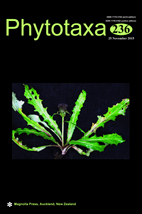Abstract
Diplazoptilon is a monotypic genus belonging to the Saussurea group (Asteraceae, Cardueae). We undertake micromorphological and molecular studies to discuss the systematic position of this genus. The achene of Diplazoptilon picridifolium is obconical, 4-angled, with a small crown on the apical rim. The pollen of D. picridifolium are spheroidal, narrowly tricolpate, with the exine reticulate and shortly spinulate. The micromorphological characters of D. picridifolium are well in accordance with those of the genus Saussurea. Our molecular analyses demonstrate that Diplazoptilon and Saussurea form a strongly supported clade. Taking into account the great similarities in achene, pappus and pollen morphology between Diplazoptilon and Saussurea, it is reasonable to merge Diplazoptilon with Saussurea. From our molecular work and the gross-morphological characters, D. picridifolium should be a member of Saussurea subgen. Saussurea sect. Strictae. There are more than one species with a plumose outer pappus in the genus Saussurea, and the occurrences the plumose outer pappus in the genus Saussurea may have had parallel origins.

